SRM-AP All News
ALL News
- Computing Influential nodes in complex networks June 7, 2022
With its vast applications in the industry, computing influential nodes is becoming a popular research field in recent days. The Department of Computer Science and Engineering is delighted to inform you that the paper, Computing Influential Nodes Using Nearest Neighborhood Trust Value and Pagerank in Complex Networks have been published by Dr Murali Krishna Enduri, Assistant Professor, Dr Satish Anamalamudi, Associate Professor, and the PhD students; Koduru Hazarathaiah, Ms Srilatha Tokala in the Entropy Journal (Q2 Journal), with an impact factor 2.587.
Abstract
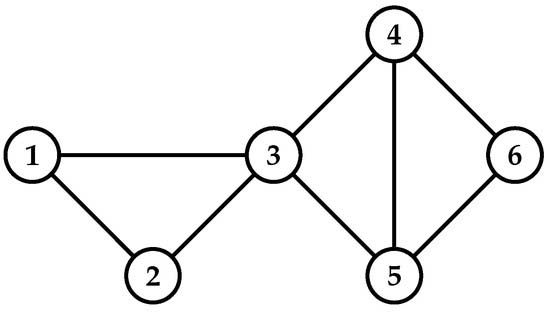 Computing influential nodes attract many researchers’ attention for spreading information in complex networks. It has vast applications such as viral marketing, social leaders, rumour control, and opinion monitoring. The information spreading ability of influential nodes is more compared with other nodes in the network. Several researchers proposed centrality measures to compute the influential nodes in the complex network, such as degree, betweenness, closeness, semi-local centralities, PageRank, etc. These centrality methods are defined based on the local and/or global information of nodes in the network. However, due to the high time complexity, centrality measures based on the global information of nodes have become unsuitable for large-scale networks. Very few centrality measures exist that are based on the attributes between nodes and the structure of the network. We propose the Nearest Neighbourhood Trust PageRank (NTPR) based on the structural attributes of neighbours and nearest neighbours of nodes. We define the measure based on the degree ratio, the similarity between nodes, the trust value of neighbours, and the nearest neighbours.
Computing influential nodes attract many researchers’ attention for spreading information in complex networks. It has vast applications such as viral marketing, social leaders, rumour control, and opinion monitoring. The information spreading ability of influential nodes is more compared with other nodes in the network. Several researchers proposed centrality measures to compute the influential nodes in the complex network, such as degree, betweenness, closeness, semi-local centralities, PageRank, etc. These centrality methods are defined based on the local and/or global information of nodes in the network. However, due to the high time complexity, centrality measures based on the global information of nodes have become unsuitable for large-scale networks. Very few centrality measures exist that are based on the attributes between nodes and the structure of the network. We propose the Nearest Neighbourhood Trust PageRank (NTPR) based on the structural attributes of neighbours and nearest neighbours of nodes. We define the measure based on the degree ratio, the similarity between nodes, the trust value of neighbours, and the nearest neighbours.Explanation of the research
The research computes the influential nodes on the various real-world networks by using the proposed centrality method NTPR. The researchers find the maximum influence by using influential nodes with SIR and independent cascade methods. They also compare the maximum influence of our centrality measure with the existing basic centrality measures.
Social implications
Viral Marketing is a business strategy that uses existing social networks to promote products. The influential nodes in complex networks can be found using the centrality measure and can be used as the seed nodes for promoting products in the social networks. A rumour is a statement being said without knowing if it is true or not. The rumours can be easily controlled by discovering influential nodes. The researchers look forward to finding a centrality measure to detect the influential nodes efficiently.
Continue reading → - The potential applications of NdNiO3 June 7, 2022
Research at the Department of Physics is currently exploring the potential applications of NdNiO3. Recently, Professor Ranjit Thapa, and his Ph D student, Mr Deepak S Gavali published the paper, Low-Temperature Spin-Canted Magnetism and Bipolaron Freezing Electrical Transition in Potential Electron Field Emitter NdNiO3 in the journal ACS Applied Electronic Materials, with an Impact Factor of 3.314. This work is done in collaboration with the Department of Physics and Astronomy, National Institute of Technology Rourkela, Rourkela, Odisha, India.
About the research
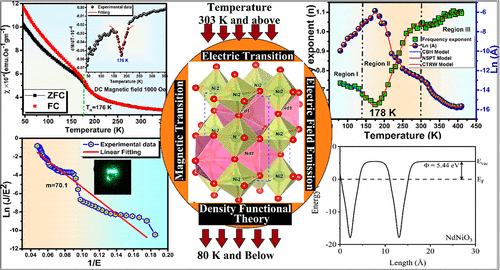 In this work, NdNiO3 nanoparticles are synthesized by sol-gel auto-combustion techniques, and its primary characterization related to structural and surface morphological analysis is carried out by X-Ray Diffraction (XRD), Fourier Transforms Infrared Spectroscopy (FTIR), Field Emission Scanning Electron Microscopy (FESEM), Energy-Dispersive X-ray spectroscopy (EDX), and Transmission Electron Microscopy (TEM) techniques. The research is focused on magnetic phase transition below Curie temperature (TN) ∼176 K, and the magnetic susceptibility indicates a weak antiferromagnetic ordering at low temperature. Different ac conduction mechanisms, that is, Correlated Barrier Hopping (CBH), Continuous-Time Random Walk (CTRW) conduction model, and Non-overlapping Small Polaron Tunneling (NSPT), are introduced to interpret its electrical transport behavior near, above, and below TMI ∼178 K. Using first principles and Density of States (DOS) calculation, the researchers have characterized the electronic and magnetic ground state of NdNiO3 at room temperature. It exposed the overlapping of conduction and valence band at room temperature, and the degree of hybridization between Ni 3d and O 2p is very high compared to Nd 5d states. The work function is also calculated for a few-layer NdNiO3 to estimate the field enhancement factor (β), which plays a crucial role in the practical application of a field emitter.
In this work, NdNiO3 nanoparticles are synthesized by sol-gel auto-combustion techniques, and its primary characterization related to structural and surface morphological analysis is carried out by X-Ray Diffraction (XRD), Fourier Transforms Infrared Spectroscopy (FTIR), Field Emission Scanning Electron Microscopy (FESEM), Energy-Dispersive X-ray spectroscopy (EDX), and Transmission Electron Microscopy (TEM) techniques. The research is focused on magnetic phase transition below Curie temperature (TN) ∼176 K, and the magnetic susceptibility indicates a weak antiferromagnetic ordering at low temperature. Different ac conduction mechanisms, that is, Correlated Barrier Hopping (CBH), Continuous-Time Random Walk (CTRW) conduction model, and Non-overlapping Small Polaron Tunneling (NSPT), are introduced to interpret its electrical transport behavior near, above, and below TMI ∼178 K. Using first principles and Density of States (DOS) calculation, the researchers have characterized the electronic and magnetic ground state of NdNiO3 at room temperature. It exposed the overlapping of conduction and valence band at room temperature, and the degree of hybridization between Ni 3d and O 2p is very high compared to Nd 5d states. The work function is also calculated for a few-layer NdNiO3 to estimate the field enhancement factor (β), which plays a crucial role in the practical application of a field emitter.Practical implications
The additional novelty of the present work is to explore the potential application of NdNiO3 as an efficient field emitter and controlled electron/X-ray sources in a flat panel display, microwave vacuum electronic devices, electron microscopy/ lithography, and so forth. To eject conducting electrons from the metal/semiconducting surface by a quantum mechanical tunneling process, sufficient energy is required in terms of the applied electric field (∼106 to 107 V/cm) to overcome the potential barrier at the vacuum−metal interface. The potential difference between the Fermi level (Ef ) of the metal surface to vacuum is known as the work function (Φ). It depends on material characteristics and plays an essential role in field enhancement capability. The primary requirement for efficient field emitters is high aspect ratios (i.e., field enhancement factor), inferior turn-in field, low work, function, etc. Researchers have examined various classes of materials for efficient field emitter electrodes, such as (i) carbonaceous materials like graphene and carbon nanotube, (ii) various 1D and 2D metal oxide and transition metal dichalcogenides like ZnO, MnO2, In2O3, WS2, WSe2, MoS2, PdSe2, etc., (iii) inorganic semiconductors like SiC and Si, and (iv) wide band gap semiconducting compounds GaN, AIN, and so on. The field emission properties of rare earth nickelates (RNiO3; R = La, Gd, Nd, Sm, etc.) with an exciting room temperature metallic nature have not been examined.
Continue reading → - Applying the Pareto principle in disordered systems June 6, 2022
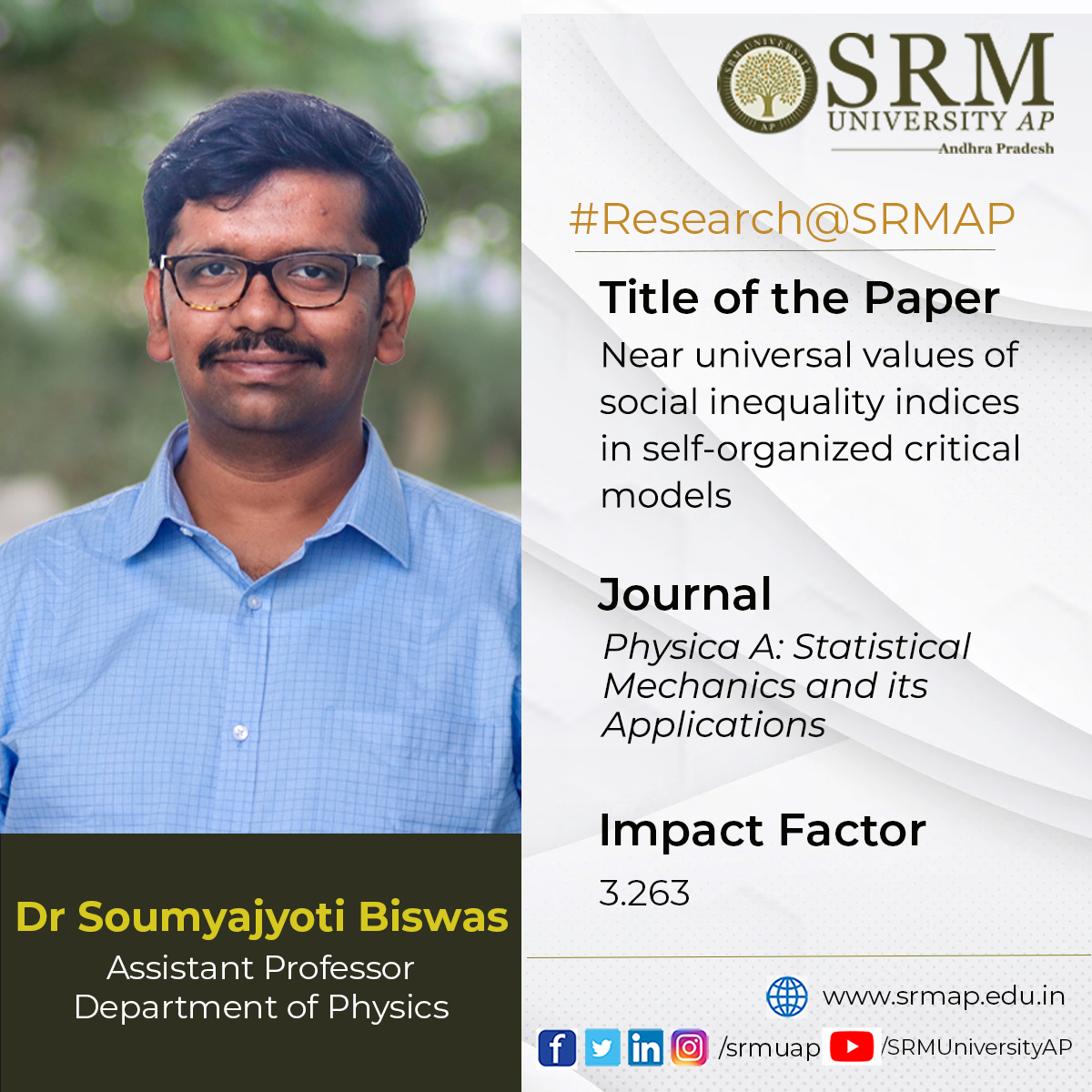
The Department of Physics is glad to announce that Dr Soumyajyoti Biswas, Assistant Professor, has published a paper titled ” Near universal values of social inequality indices in self-organized critical models” in the journal Physica A: Statistical Mechanics and its Applications having an impact factor of 3.263. This research was done in collaboration with Prof S S Manna of S N Bose National Center for Basic Sciences and Prof B K Chakrabarti of Saha Institute of Nuclear Physics.
It is well known that wealth invariably accumulates only in a few hands while a majority of the world continues to remain poor. In economics, it is quantified in Pareto’s 80-20 law (20% of people possess 80% of wealth) or ‘The Law of the Vital Few’. This research reveals that the implication of this law goes far beyond the socio-economic systems. It is also a crucial indicator of the onset of critical phenomena in a wide class of physical systems.
It has been observed that in the dynamics of disordered systems, such as fracture and breakdown of solids, slowly increasing the external force produces acoustic emissions (crackling noise), the sizes of which follow Pareto-like behaviour (most noises are weak, only a few are strong that results in the breakdown). Quantifications of these “inequalities” in these physical systems reveal some universal characteristics in a wide class of models, known as self-organized critical systems.
The main implication of this observation lies in predicting catastrophic breakdown in disordered systems. Applications of these inequality measures, which are traditionally in the domain of social sciences, have proved to be immensely useful in identifying the approaching breakdown points in the models of disordered systems. Given that the methods are applicable to a wide variety of models, the 80-20 law has the potential for a wide range of applications. Dr Biswas and his PhD student Diksha are currently working with a team in Spain on experimental data and studying these inequalities in real systems.
Continue reading → - Research article accepted for IEEE conference IEMTRONICS 2022 June 4, 2022
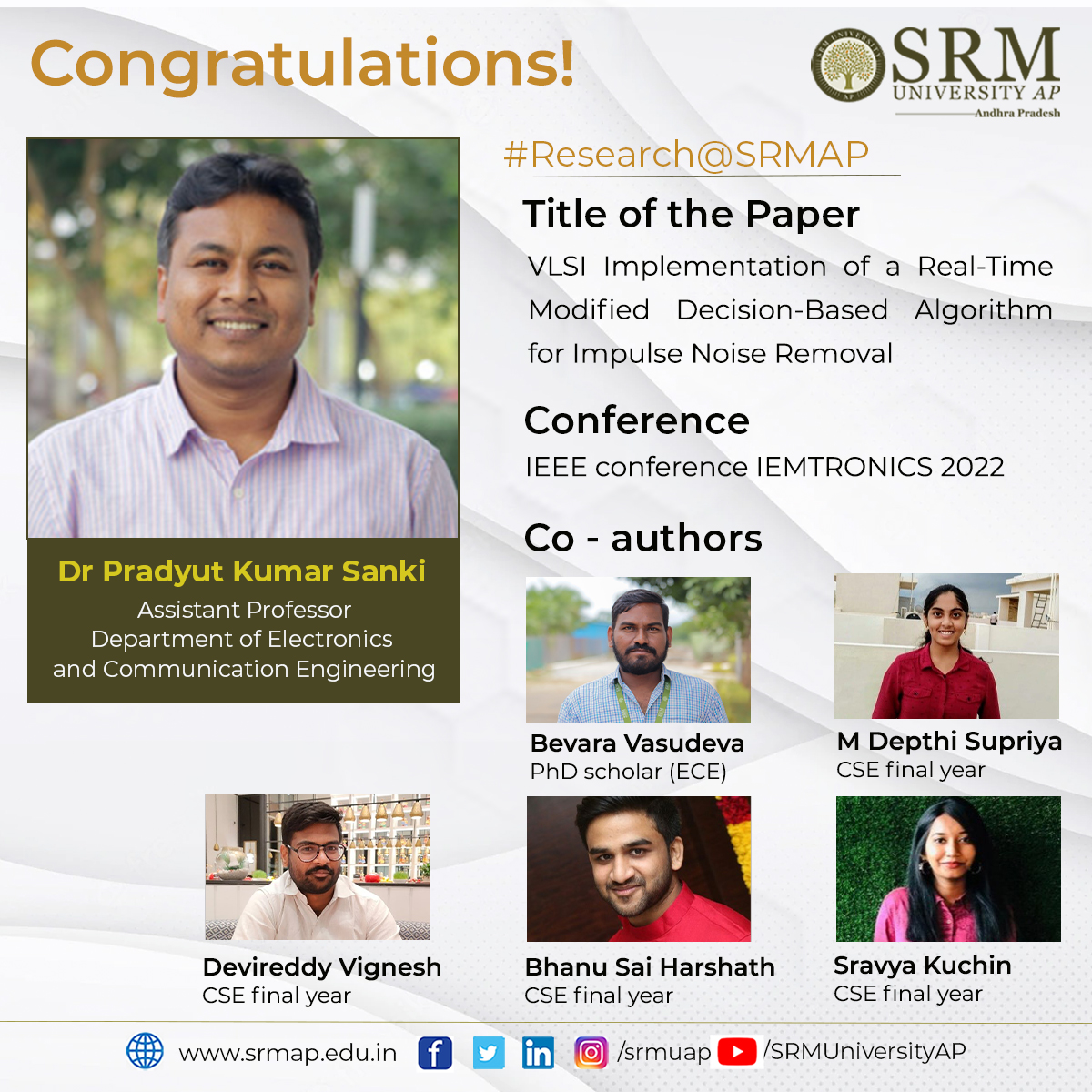
SRM University-AP preserves a research-empowered ecosystem stimulating its faculty and students to roll out original and discerning studies capable of making instrumental contributions aiming the scientific and societal progress. Making strides with impactful research publications and groundbreaking achievements, the institution has carved a niche for itself in the academic milieu. We are glad to present yet another success story of our research community that keeps bringing laurels to the institutions from far and wide.
Dr Pradyut Kumar Sanki and his PhD scholar Bevara Vasudeva, from the Department of Electronics and Communications Engineering, along with a group of Computer Science and Engineering students: Medarametla Depthi Supriya, Devireddy Vignesh, Peram Bhanu Sai Harshath, and Sravya Kuchina have got their paper titled ‘’VLSI Implementation of a Real-Time Modified Decision-Based Algorithm for Impulse Noise Removal’’ accepted in the IEEE conference IEMTRONICS 2022. This publication is a part of the Capstone project contributed by the students.
IEMTRONICS 2022 (International IOT, Electronics and Mechatronics Conference) is an international conclave that aims to bring together scholars from different backgrounds to disseminate inventive ideas in the fields of IOT, Electronics and Mechatronics. The conference will also promote an intense dialogue between academia and industry to bridge the gap between academic research, industry initiatives, and governmental policies. This is fostered by panel discussions, invited talks, and industry exhibits where academia and industry will mutually benefit from each other.
Through the research paper, the team proposes a real-time impulse noise removal (RTINR) algorithm and its hardware architecture for denoising images corrupted with fixed valued impulse noise.
Abstract of the Research
A decision-based algorithm is modified in the proposed RTINR algorithm where the corrupted pixel is first detected and is restored with median or previous pixel value depending on the number of corrupted pixels in the image. The proposed RTINR architecture has been designed to reduce the hardware complexity as it requires 21 comparators, 4 adders, and 2 line buffers which in turn improve the execution time. The proposed architecture results better in qualitative and quantitative performance in comparison to different denoising schemes while evaluated based on the following parameters: PSNR, IEF, MSE, EKI, SSIM, FOM, and visual quality. The proposed architecture has been simulated using the XC7VX330T-FFG1761 VIRTEX7 FPGA device and the reported maximum post place and route frequency is 360.88 MHz. The proposed RTINR architecture is capable of denoising images of size 512 × 512 at 686 frames per second. The architecture has also been synthesized using UMC 90 nm technology where 103 mW power is consumed at a clock frequency of 100 MHz with a gate count of 2.3K (NAND2) including two memory buffers.
Continue reading → - Design methodologies for composite structures in aircraft engines June 3, 2022
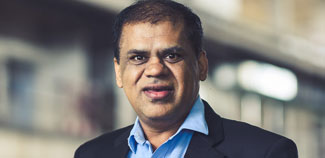 Dr Prakash Jadhav, Professor and Head, Department of Mechanical Engineering at SRM University-AP has published a chapter titled “Design Methodologies for Composite Structures in Aircraft Engines” in the book Advanced composites in aerospace engineering applications, Feb 2022, ISBN 978-3-030-88191-7, Springer.
Dr Prakash Jadhav, Professor and Head, Department of Mechanical Engineering at SRM University-AP has published a chapter titled “Design Methodologies for Composite Structures in Aircraft Engines” in the book Advanced composites in aerospace engineering applications, Feb 2022, ISBN 978-3-030-88191-7, Springer.Abstract of the book chapter
Recently there have been many successful attempts to implement the use of fibre-reinforced composite structures in commercial aircraft engines. The author has been part of these efforts while working in the aviation industry. This article describes these efforts to design, analyze, manufacture, and implement the composite structures inside the low-pressure and low-temperature zones of the engine. Very innovative out-of-the-box design methodologies were used to design these components. These efforts elaborate on the design, optimization, and improvement of the composite fan blade, the composite fan platform, and the composite booster blade inside the engine. It focuses on structural design, aerodynamic efficiency, and specific fuel consumption improvement efforts along with the usual reduction of weight targets. This work successfully demonstrates the systematic steps in the design and implementation like preliminary coupon-level simulations, coupon-level manufacturing, coupon/prototype testing, and final part-level simulations followed by part tests.
The target readers for the book are all engineers, professionals and researchers from the aerospace field. Dr Prakash Jadhav’s future research plan is to continue to develop new methodologies to implement more composites into the aerospace industry. The book chapter will be extremely useful for engineers working on the design of composite structures for aerospace applications.
Continue reading → - An IoT- based smart wallet prototype June 2, 2022
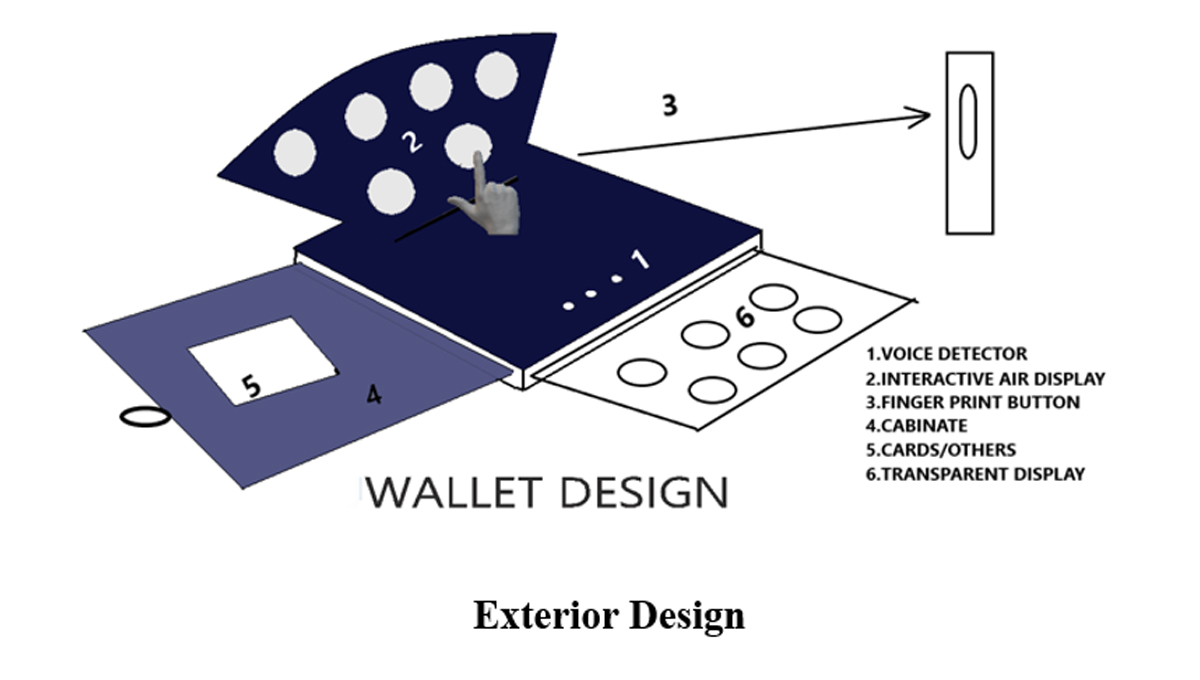 Dr Sonam Maurya, and her research team; Soha Muskaan Sayyad, Trisha Chilukuri, Samah Maaheen Sayyad, and Juhita Naga Priya Velagapudi from the Department of Computer Science and Engineering have innovated a smart wallet model based on IoT and got their patent “Smart Wallet with Enhanced Features for Preventing Misuse and Alarm System for the Same” published. This is a fitting solution to protect against the loss and theft of the wallet.
Dr Sonam Maurya, and her research team; Soha Muskaan Sayyad, Trisha Chilukuri, Samah Maaheen Sayyad, and Juhita Naga Priya Velagapudi from the Department of Computer Science and Engineering have innovated a smart wallet model based on IoT and got their patent “Smart Wallet with Enhanced Features for Preventing Misuse and Alarm System for the Same” published. This is a fitting solution to protect against the loss and theft of the wallet.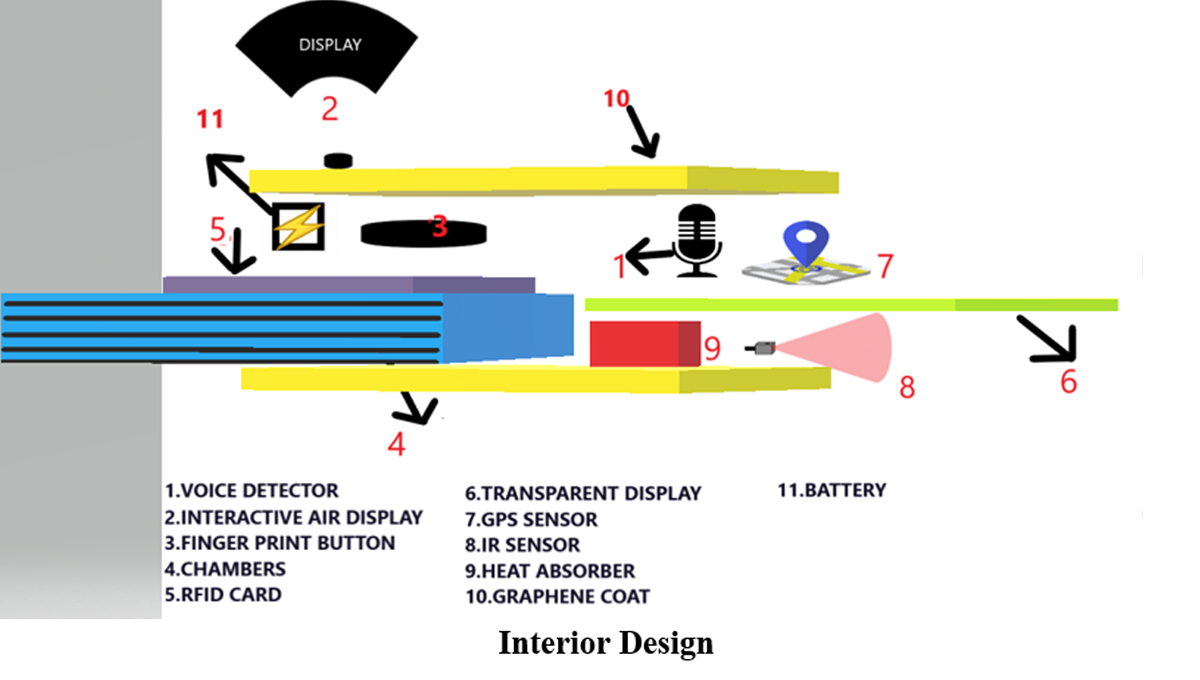 A smart wallet is an excellent technology to safeguard your credit and debit cards. Wallets these days are getting smarter with the latest technologies induced to monitor its presence. The proposed IoT- based wallet model is more smart, intelligent, secure, and safe which encompasses the best use of the latest IoT technologies in our pocket. The prototype consists of fingerprinting access technology, Augmented Reality (AR) navigation, Interactive Air Display (IAD)/ Transparent Display (TD), Voice control mechanism, Emergency alerts, RFID features, and many more. The smart wallet is designed to overcome the shortcomings of the regular wallet types.
A smart wallet is an excellent technology to safeguard your credit and debit cards. Wallets these days are getting smarter with the latest technologies induced to monitor its presence. The proposed IoT- based wallet model is more smart, intelligent, secure, and safe which encompasses the best use of the latest IoT technologies in our pocket. The prototype consists of fingerprinting access technology, Augmented Reality (AR) navigation, Interactive Air Display (IAD)/ Transparent Display (TD), Voice control mechanism, Emergency alerts, RFID features, and many more. The smart wallet is designed to overcome the shortcomings of the regular wallet types.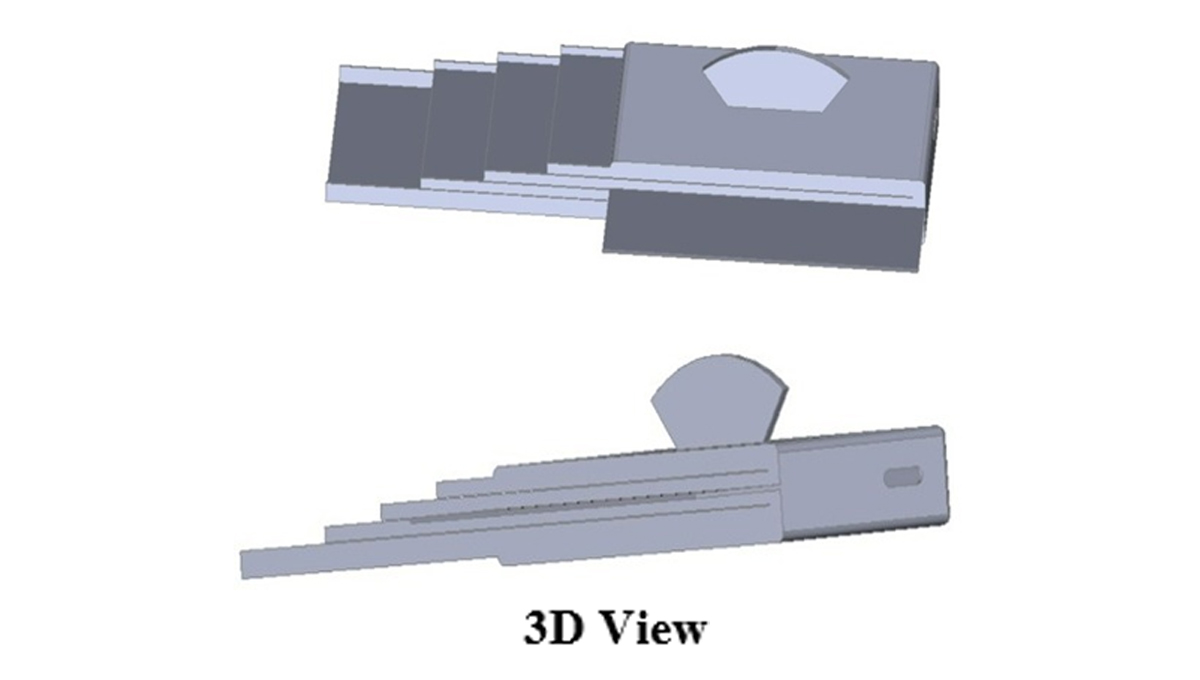 The new technology of AR makes the tracking of the wallet easier with a graphical pathway. And the voice control functionalities help the user to make the process easier in comparison to manual opening. IAD/ TD is used to control the mechanisms like opening the card or money case. To keep the data more secure from hackers, an RFID technology-enabled card is also embedded in the wallet. The strong Graphene outer covering is used to make the materials inside more flexible and safer. Besides, there is an emergency voice control mechanism that takes the instruction from the user and makes the surroundings alert by sending an alert message to the emergency contacts. And the cash counting facility in the wallet to keep track of the cash makes it a wholesome package of digital innovation.
The new technology of AR makes the tracking of the wallet easier with a graphical pathway. And the voice control functionalities help the user to make the process easier in comparison to manual opening. IAD/ TD is used to control the mechanisms like opening the card or money case. To keep the data more secure from hackers, an RFID technology-enabled card is also embedded in the wallet. The strong Graphene outer covering is used to make the materials inside more flexible and safer. Besides, there is an emergency voice control mechanism that takes the instruction from the user and makes the surroundings alert by sending an alert message to the emergency contacts. And the cash counting facility in the wallet to keep track of the cash makes it a wholesome package of digital innovation.The social implications of this smart wallet are:
• Enhanced features for preventing wallet misuse
• Alarm system to help in emergencies and threatening situations
• Best use of IoT technology in a user-friendly way
• Enabled with Wallet/ Card missing notifications
• Eco-friendly charging mechanism
With this innovation, the research team aims to bring technology to its fullest use to make significant transformations in the everyday life of society.
Continue reading → - Reconceiving the building blocks of the Universe June 2, 2022
The research at the Department of Physics is currently focusing on developing new theoretical frameworks to revamp the fundamental concepts that describe the origin of the universe. Assistant Professor Dr Amit Chakraborty has published a paper titled Revisiting Jet Clustering Algorithms for New Higgs Boson Searches in the Hadronic Final States in the European Physical Journal C, with an Impact Factor of 4.59.
Abstract
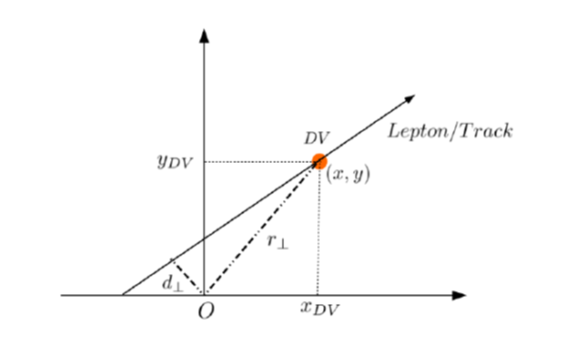 Displaced signatures originating from the pair production of a supersymmetric particle, called sneutrino, at the Large Hadron Collider (LHC) are studied. The theoretical model considered in this work is the Next-to-Minimal Supersymmetric Standard Model supplemented with right-handed neutrinos triggering a Type-I seesaw mechanism. The research has shown how such signatures can be established through a heavy Higgs portal when the sneutrinos are decaying to charged leptons and charginos giving rise to further leptons or hadrons. The research also illustrated how the Yukawa parameters of neutrinos can be extracted by measuring the lifetime of the sneutrino from the displaced vertices, thereby characterising the dynamics of the underlying mechanism of neutrino mass generation.
Displaced signatures originating from the pair production of a supersymmetric particle, called sneutrino, at the Large Hadron Collider (LHC) are studied. The theoretical model considered in this work is the Next-to-Minimal Supersymmetric Standard Model supplemented with right-handed neutrinos triggering a Type-I seesaw mechanism. The research has shown how such signatures can be established through a heavy Higgs portal when the sneutrinos are decaying to charged leptons and charginos giving rise to further leptons or hadrons. The research also illustrated how the Yukawa parameters of neutrinos can be extracted by measuring the lifetime of the sneutrino from the displaced vertices, thereby characterising the dynamics of the underlying mechanism of neutrino mass generation.Explanation of the research
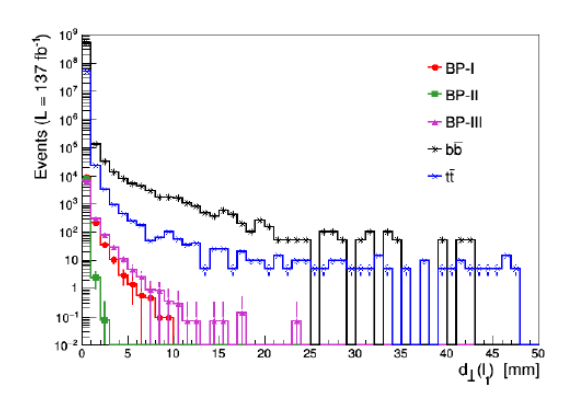 The Standard Model of Particle Physics is currently the remarkably successful theory to describe the basic building blocks of the universe and their interactions with the three fundamental forces of nature. Despite its success at explaining the universe, the Standard Model does have several limitations. For example, how neutrinos get their mass, why the mass spectrum of the different elements of SM fermions, namely quarks and leptons, are so hierarchical, why the Higgs boson mass is so low, etc. The primary research is to understand these issues and then propose theoretical models which circumvent these shortcomings of SM and provide signatures that can be tested in the ongoing or future proposed experiments.
The Standard Model of Particle Physics is currently the remarkably successful theory to describe the basic building blocks of the universe and their interactions with the three fundamental forces of nature. Despite its success at explaining the universe, the Standard Model does have several limitations. For example, how neutrinos get their mass, why the mass spectrum of the different elements of SM fermions, namely quarks and leptons, are so hierarchical, why the Higgs boson mass is so low, etc. The primary research is to understand these issues and then propose theoretical models which circumvent these shortcomings of SM and provide signatures that can be tested in the ongoing or future proposed experiments.For this research project, Dr Amit Chakraborty have collaborated with Particle Physics Department, STFC Rutherford Appleton Laboratory, UK and School of Physics and Astronomy, University of Southampton, UK. His broad research interest is to perform theoretical studies of physics beyond the Standard Model (BSM) in particular, collider search strategies and prospects of different BSM models at the Large Hadron Collider (LHC) and future proposed collider experiments. He aims to build new theoretical models, develop new techniques/tools, and devise new search strategies to improve our knowledge of the standard model as well as BSM physics processes.
Dr Amit Chakraborty’s future research topics include Higgs Boson Physics and Beyond Standard Model Physics Phenomenology, Dark Matter at the Colliders, Interpretable Machine Learning techniques in BSM Physics, and Ultra-light particles and Physics Beyond the Colliders.
Continue reading → - Hatchlab incubates student venture Amruthik Private Ltd June 1, 2022
Empowering and Enabling startup entrepreneurs
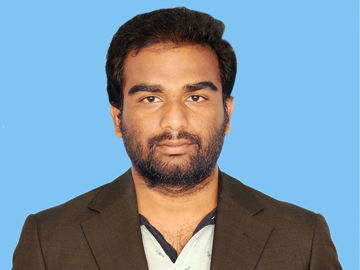 A personal incident motivated Jithin Peram, final year Computer Science Engineering student, to start Amruthik Pvt. Ltd, a company which supplies customised food to various hospitals based on the specific needs of the patients. Various doctors and hospitals have appreciated this customisation of food as per the need. Patients are satisfied as they do not have to take the generic food given by the hospital canteen now. Instead, they have the option to have a very specific diet prescribed by certified dieticians.
A personal incident motivated Jithin Peram, final year Computer Science Engineering student, to start Amruthik Pvt. Ltd, a company which supplies customised food to various hospitals based on the specific needs of the patients. Various doctors and hospitals have appreciated this customisation of food as per the need. Patients are satisfied as they do not have to take the generic food given by the hospital canteen now. Instead, they have the option to have a very specific diet prescribed by certified dieticians.The motivation behind the launch of Amruthik is quite inspirational. Jithin’s grandfather passed away due to corona. While his grandfather was suffering with Covid-19 and was admitted in hospital, Jithin was preparing for viva practicals. On hearing the news, he was shattered and it struck him how quickly everything can change around us. Since Jithin was not able to do small things such as taking lunch to his grandfather or standing next to him for moral support; With Amruthik, Jithin dreams of being there for people who need moral support and care in their hospital beds “This makes me happy, and I believe this kind of support is something everyone deserves”, says Jithin on a happy note.
Five years from now, Jithin envisions himself supporting, helping and standing by millions of people who need such services. He believes in putting smiles on faces and wants to see the impressive growth of his company.
Let’s see what Jithin says
As an engineering student, I would have never known the opportunities I have, even with the idea to build my company I would have been lost without proper guidance The Hatchlab Research Centre has given me guidance and a foundation that I can rely upon building my company.
I am thankful for the immense support I got from the faculty and the guidance provided by SRM AP, I especially thank Mr Udayan Bakshi for mentoring me and sharing his experiences with me.
Continue reading → - Ultra-stable perovskite nanocrystals for light-emitting applications June 1, 2022

Cesium lead halide perovskite nanocrystals (PNCs) belong to the flourishing research area in the field of photovoltaic and optoelectronic applications because of their excellent optical and electronic properties. Mainly, Cesium lead bromide (CsPbBr3) NCs with bright green photoluminescence (PL) and narrow full-width at half-maximum (FWHM) of <25 nm are the most desirable for television displays and green-emitting LEDs. However, challenges with respect to CsPbBr3 PNCs‘ stability, limit their usage in practical applications. The recent findings of Dr Nimai Mishra and his research team assert that surface passivation with an additional ligand could be an excellent, easy, and facile approach to enhancing the photoluminescence and stability of PNCs.
Dr Nimai Mishra, Assistant Professor, Department of Chemistry, along with his research group comprising of students pursuing PhD under him, Dr V G Vasavi Dutt, Mr Syed Akhil, Mr Rahul Singh, and Mr Manoj Palabathuni have published their research article titled “Year-Long Stability and Near-Unity Photoluminescence Quantum Yield of CsPbBr3 Perovskite Nanocrystals by Benzoic Acid Post-treatment“ in The Journal of Physical Chemistry C (A Q1 journal published by ‘The American Chemical Society’) having an impact factor of ~4.2.
In this article, the research group addresses the stability issues of green-emitting CsPbBr3 PNCs with simple post-treatment using benzoic acid (BA). A remarkable improvement in PLQY from 69.8% to 97% (near unity) was observed in benzoic acid-treated CsPbBr3 PNCs. The effective surface passivation by benzoic acid is also apparent from PL decay profiles of BA-CsPbBr3 PNCs. The long-term ambient stability and stability against ethanol of BA-CsPbBr3 PNCs are also well presented in the research. The PL intensity of untreated CsPbBr3 PNCs is completely lost within five months since the synthesis date, while ̴ 65% of initial PL intensity is preserved for BA-CsPbBr3 PNCs even after one year.
Furthermore, BA-CsPbBr3 PNCs exhibits excellent photo-stability where 36% of PL is retained while PL is completely quenched when the PNCs are exposed to 24 hours of continuous UV irradiation. Importantly, BA-CsPbBr3 PNCs show excellent stability against ethanol treatment as well. Finally, green, emitting diodes using BA-CsPbBr3 PNCs are fabricated by drop-casting NCs onto blue-emitting LED lights. Thus a simple benzoic acid posttreatment further presents the scope of use of these materials display technologies.
- Metaheuristics attribute selection model for efficient diagnosis of chronic disorders May 31, 2022
 The technological advancements in the medical domain have aided in the effective collection of data such as personal information, clinical history, and disease symptoms of patients. However, the accumulation of massive quantity of data may cause errors in the diagnosis of the disease. A chronic disease dataset may be comprised of numerous symptoms and attributes where not all of them are of equal importance in disease diagnosis. A few of those attributes may be less relevant or redundant.
The technological advancements in the medical domain have aided in the effective collection of data such as personal information, clinical history, and disease symptoms of patients. However, the accumulation of massive quantity of data may cause errors in the diagnosis of the disease. A chronic disease dataset may be comprised of numerous symptoms and attributes where not all of them are of equal importance in disease diagnosis. A few of those attributes may be less relevant or redundant.Through her research, Dr Priyanka from the Department of Computer Science and Engineering proposes metaheuristics driven attribute optimization techniques that can be implemented in optimizing chronic disease datasets to achieve optimal efficiency in disease risk prediction which can help in proper medical diagnosis. Her paper titled “A Decisive Metaheuristics Attribute Selector Enabled Combined Unsupervised-Supervised Model for Chronic Disease Risks Assessment” was published in the Q1 journal Computational Intelligence and Neuroscience.
 This research can be used to develop a decision support system to assist medical experts in the effective analysis of chronic diseases in a cost-effective manner. The system model may be used to assist medical experts in the efficient diagnosis of chronic disease risks. In future, the research study can be further enhanced to validate the model on more complex heterogeneous datasets with varying sizes and structures. Also, deep learning methods can be employed using image-based real-time datasets.
This research can be used to develop a decision support system to assist medical experts in the effective analysis of chronic diseases in a cost-effective manner. The system model may be used to assist medical experts in the efficient diagnosis of chronic disease risks. In future, the research study can be further enhanced to validate the model on more complex heterogeneous datasets with varying sizes and structures. Also, deep learning methods can be employed using image-based real-time datasets.Abstract of the Research
Advanced predictive analytics coupled with an effective attribute selection method plays a pivotal role in precise assessment of chronic disorders risks in patients. In this paper, a novel buffer enabled heuristic a Memory based Metaheuristics Attribute Selection (MMAS) model is proposed, which performs local neighbourhood search for optimizing chronic disorders data. Heart disease, breast cancer, diabetes and hepatitis are the datasets used in the research. Upon implementation of the model, a mean accuracy of 94.5% using MMAS was recorded and it dropped to 93.5% if clustering was not used. The average precision, recall and f-score metric computed were 96.05%, 94.07% and 95.06% respectively. The model also has a least latency of 0.8 sec. Thus it is demonstrated that chronic disease diagnosis can be significantly improved by heuristics based attribute selection coupled with clustering followed by classification.
Figure 1: The proposed Metaheuristics attribute selector based classification model for chronic disorders detection
Figure 2: Accuracy analysis of MMAS method on different disease datasets
Continue reading →

